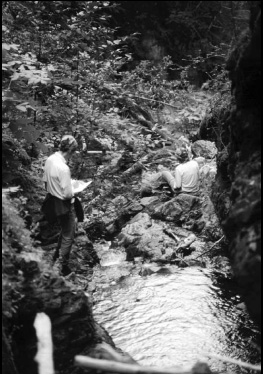| Dynamic Response of Bedrock Channels to Tectonic Forcing |
 |
Project Summary
Personnel: Noah Snyder (Ph.D.) Erosional unloading is an important force in orogenic processes; the rates and patterns of erosion influence the heights of mountain belts, outcrop patterns of lithologic units, and, perhaps, the rates and styles of crustal deformation. Analysis of the interactions of tectonic and surficial processes requires quantitative understanding of the dynamics of bedrock channel systems. That is, in tectonically active fluvial landscapes bedrock channels control the rates and patterns of erosional unloading because they set the lower boundary condition for hillslope processes that accomplish land surface denudation. Unfortunately, little is known quantitatively about many aspects of the process of river incision into bedrock, and this limits our ability to model the evolution of bedrock channel systems. In particular, field data are needed to constrain:
In an effort to improve our capabilities to model interactions between tectonic and surface processes, we propose to examine bedrock channel systems at three field sites: coastal drainages of the King Range of northern California, post-glacial gullies in the Finger Lakes region of New York, and Knife Creek in the Valley of Ten Thousand Smokes in Alaska. We chose these sites because climate and lithology are spatially invariant in each, uplift and climatic histories of each are relatively well-constrained, and each contains landforms indicative of incision (e.g., strath terraces) and tectonic disturbance (e.g., oversteepened stream segments) that provide a means of assessing incision rates and patterns of transient response to tectonic forcing. We will use data obtained from this comparative analysis to place quantitative constraints on an existing mathematical model of bedrock channel evolution through a series of forward and inverse modeling exercises (both 2-D profile and 3-D landscape evolution models). The results will provide a more complete understanding of processes in bedrock channel systems and an improved mathematical framework for the analysis of landscape evolution and the interaction of tectonic, climatic and surficial processes. |